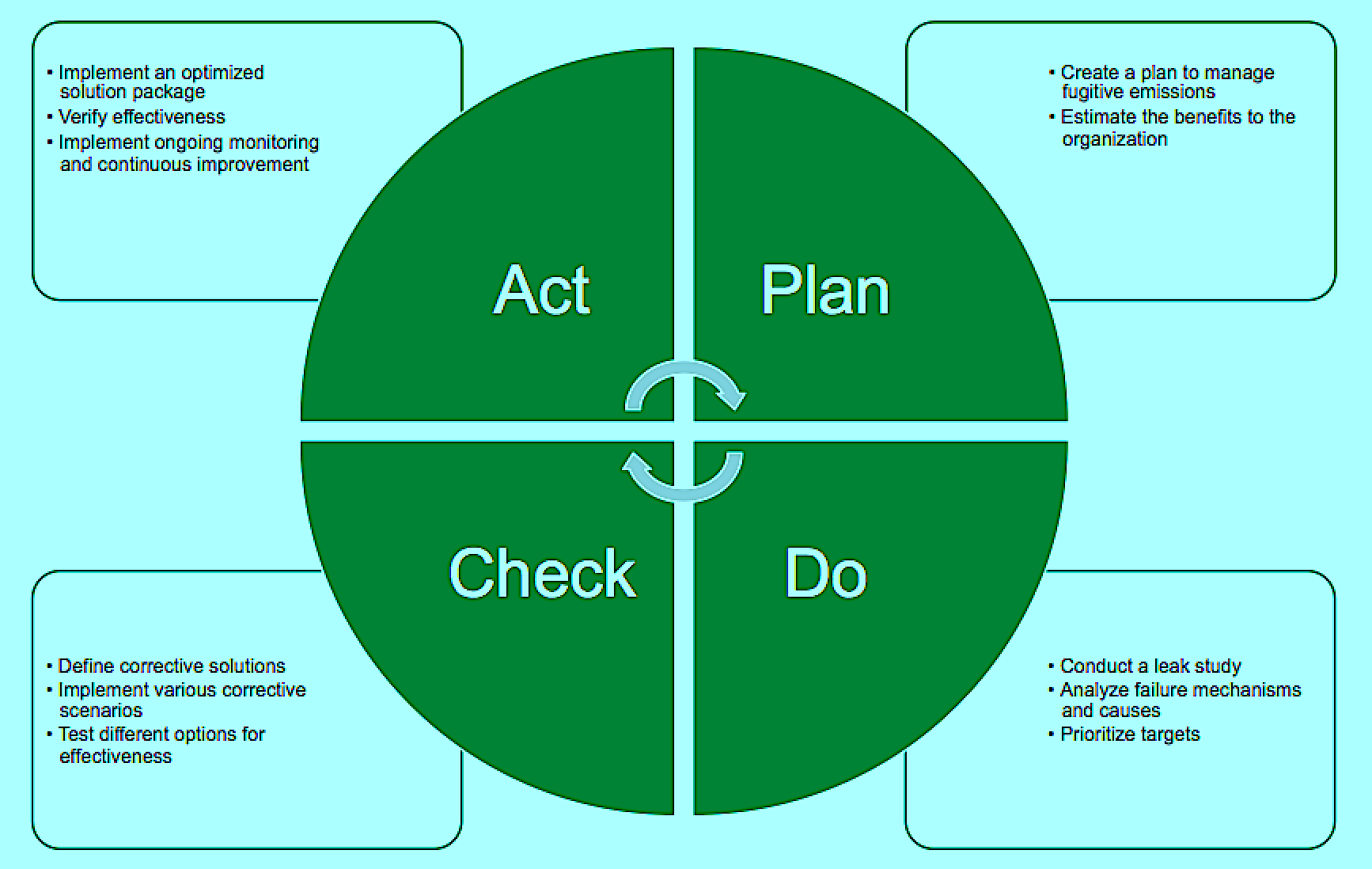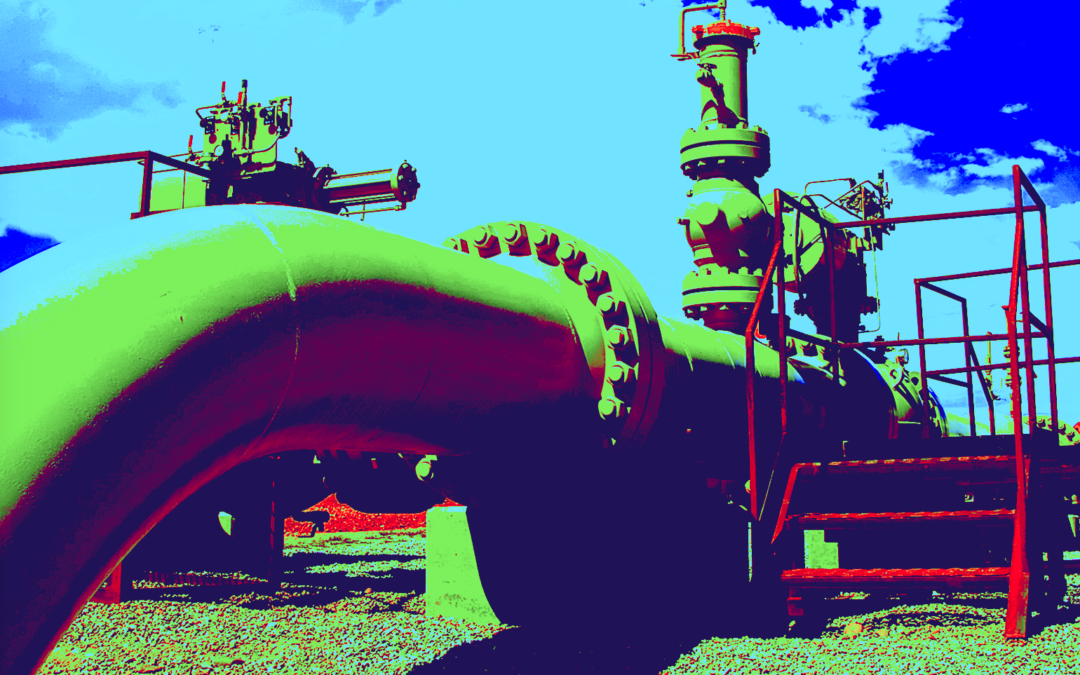Fugitive emissions, are a concern across the industrial landscape. Although this article focuses on leveraging predictive maintenance (PdM) to combat the problem in the natural-gas arena, the suggested strategies and tactics can be adapted in any operation where process safety is a priority.
THE COST OF FUGITIVE METHANE EMISSIONS
While methane is a much cleaner-burning fuel than coal, fugitive methane emissions in the production, processing and transportation of natural gas are a spoiler. The direct costs associated with such leaks in midstream natural gas systems have a direct effect on owner/operator profits. The environmental and sustainability impact is even greater given the fact that methane is such a strong greenhouse gas (GHG). Add to that the cost of fires resulting from natural gas leaks: They destroy property and cause injuries or loss of life.
SUGGESTED PDM APPROACH TO THE PROBLEM
The last thing reliability engineers want to hear is that the opportunity to improve lays within the many random causes of failure. Fortunately, that’s not applicable to the matter of fugitive methane emissions. Research has revealed that the majority of such incidents are caused by a comparatively small number of super-emitters (see Sidebar at the bottom of this page).
The good news is reliability engineers can mount an effective attack on fugitive methane emissions with predictive monitoring techniques. In fact, looking at the problem from a predictive-maintenance and reliability-engineering perspective, addressing such leaks would seem to be a rather routine type of undertaking. Granted, predictive monitoring can be tricky. It is, however doable. Refer to the action items and their order in this “Plan-Do-Check-Act” cycle.

This type of “Plan-Do-Check-Act” (PDCA) cycle is specified in the
ISO 55000 series of standards for managing physical assets.
The following steps reflect a suggested approach for reliability engineers working in midstream natural gas operations. But, as noted in the introduction to this article, those working elsewhere can adapt these suggestions to meet the needs of their respective operations:
1. Survey the operation to identify and quantify leaks by employing predictive monitoring and inspections techniques and technologies. Test for leaks using infrared (IR) thermography, ultrasonic leak detectors, sniffer technologies, soapy solution, etc. Each of these technologies has its respective strengths and weaknesses: IR gives the best overall macro view. Ultrasonic analysis is the best at localizing and quantifying the emission, assuming a threshold compression pressure value that’s is necessary to produce the detectable turbulence. Gas sniffers are relatively effective if they’re right on the leak. While application of a soapy solution is the tried and true method, it’s laborious and time-consuming. More recently, a mid-IR laser detector has been developed and is available in handy portable package. It provides excellent detection resolution and can simultaneous detect and differentiate between methane (CH4) and ethane (C2H6), which is a minor component of natural gas. Be sure to consider weather and atmospheric conditions, as they can influence the effectiveness of these technologies.
2. Tag and catalog the leaks. Catalog details should include an estimate of the leak volume, risks to the organization (e.g. it’s a higher risk if the methane leak is near an ignition source) cause(s) and corrective action(s). This helps prioritize the game plan for taking corrective action. If the leak is fixed-as-found, make note of it to maintain complete records.
3. Perform cause analysis on the collected data. In some instances, the problem is clear, meaning that apparent cause analysis (ACA) is effective and efficient. In other cases, root cause analysis (RCA) is required to evaluate more serious and/or complex problems.
4. Develop corrective plans. There may be multiple optional solutions for correcting a particular type of leak. Test them for effectiveness and cost-benefit ratio. Prioritize the implementation for addressing each identified leak with an optimized set of test solution packages. The plan may include one or more of the following:
♦ redesign of the equipment
♦ change in the operating context and/or procedures.
♦ corrective maintenance to fix the leak.
♦ preventive maintenance to prevent the recurrence of the leak.
♦ predictive monitoring to ensure corrective measures are effective.
♦ live with the situation, since, sometimes, nothing is the best option
AUTHOR’S NOTE:
It’s important to stress, when it comes to leaking flammable gases that have a significant impact on the environment,
the “live with it” option listed in the last bullet point above should be used very sparingly, if at all.
5. Schedule ongoing testing and monitoring to ensure corrective actions are effective and implement continuous improvement. This is consistent with the Plan-Do-Check-Act (PDCA) cycle (see above figure), which is specified in the ISO 55000 series of standard for managing physical assets.TRR
ABOUT THE AUTHOR
Drew Troyer has 30 years of experience in the RAM arena. Currently a Principal with T.A. Cook Consultants, he was a Co-founder and former CEO of Noria Corporation. A trusted advisor to a global blue chip client base, this industry veteran has authored or co-authored more than 250 books, chapters, course books, articles, and technical papers and is popular keynote and technical speaker at conferences around the world. Drew is a Certified Reliability Engineer (CRE), Certified Maintenance & Reliability Professional (CMRP), holds B.S. and M.B.A. degrees, and is Master’s degree candidate in Environmental Sustainability at Harvard University. Contact him directly at 512-800-6031 or dtroyer@theramreview.com.
Tags: predictive maintenance, PdM, process safety, environmental safety, sustainable manufacturing
SIDEBAR
FUGITIVE SUPER-EMITTERS REVEALED
A study conducted by the Environmental Defense Fund (edf.org), in conjunction with researchers from Colorado State University (colostate.edu), found an emissions rate of 2.3% in the Barnett Field in Texas (Zavala-araiza et. al., 2017). That percentage was much higher than the estimate of about 1.4% provided by the U. S. Environmental Protection Agency (epa.gov).
According to the researchers, a significant portion of those emissions could be traced to a few bad-actors that would themselves to predictive-maintenance (PdM) monitoring, reliability analysis, and asset-performance improvement and management. In other words, as the Barnett Field findings noted, a comparatively small number of “super-emitters” represented a disproportionately large percentage of the observed methane emissions.
This seems to be a good example of the 80:20 rule, where 80% of the emissions are localized to 20% of the emitting sources. In fact, in a meta study of 18 previous studies, Brandt (2016) found that 50% of the total volume of fugitive methane emissions can be attributed to 5% percent of the sources: These “super-emitters,” in turn, might be persistent or episodic.
REFERENCES
Brandt, A. (2016). Methane Leaks from Natural Gas Systems Follow Extreme Distributions. Environmental Science and Technology, 50(22), 12512-12520.
Zavala-araiza, Alvarez, Lyon, Allen, Marchese, Zimmerle, & Hamburg. (2017). Super-emitters in natural gas infrastructure are caused by abnormal process conditions. Nature Communications, 8, 14012.



